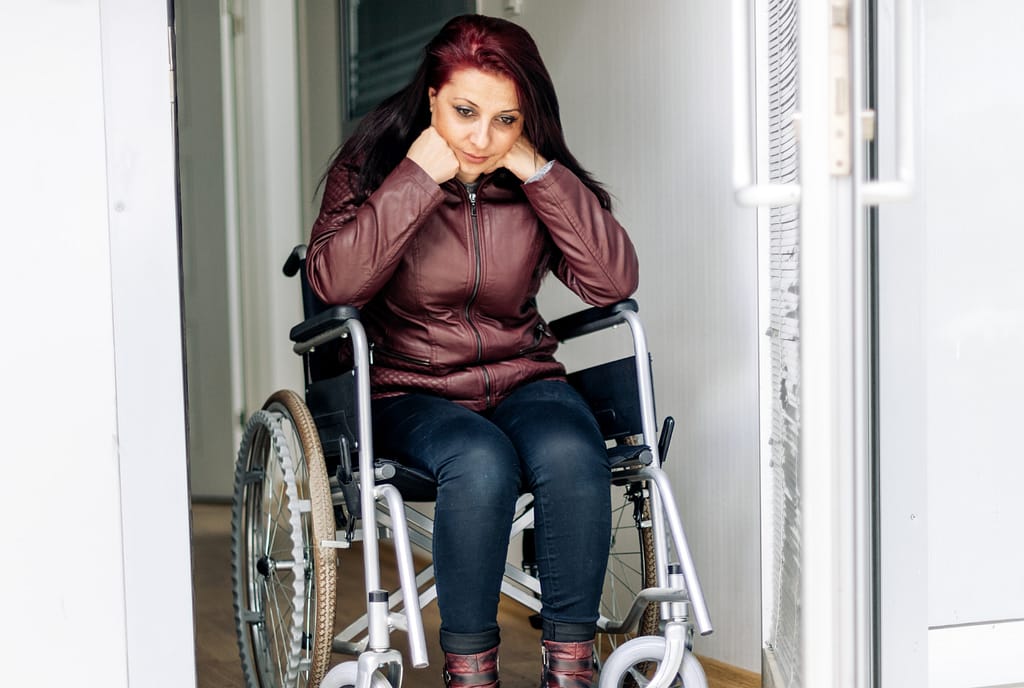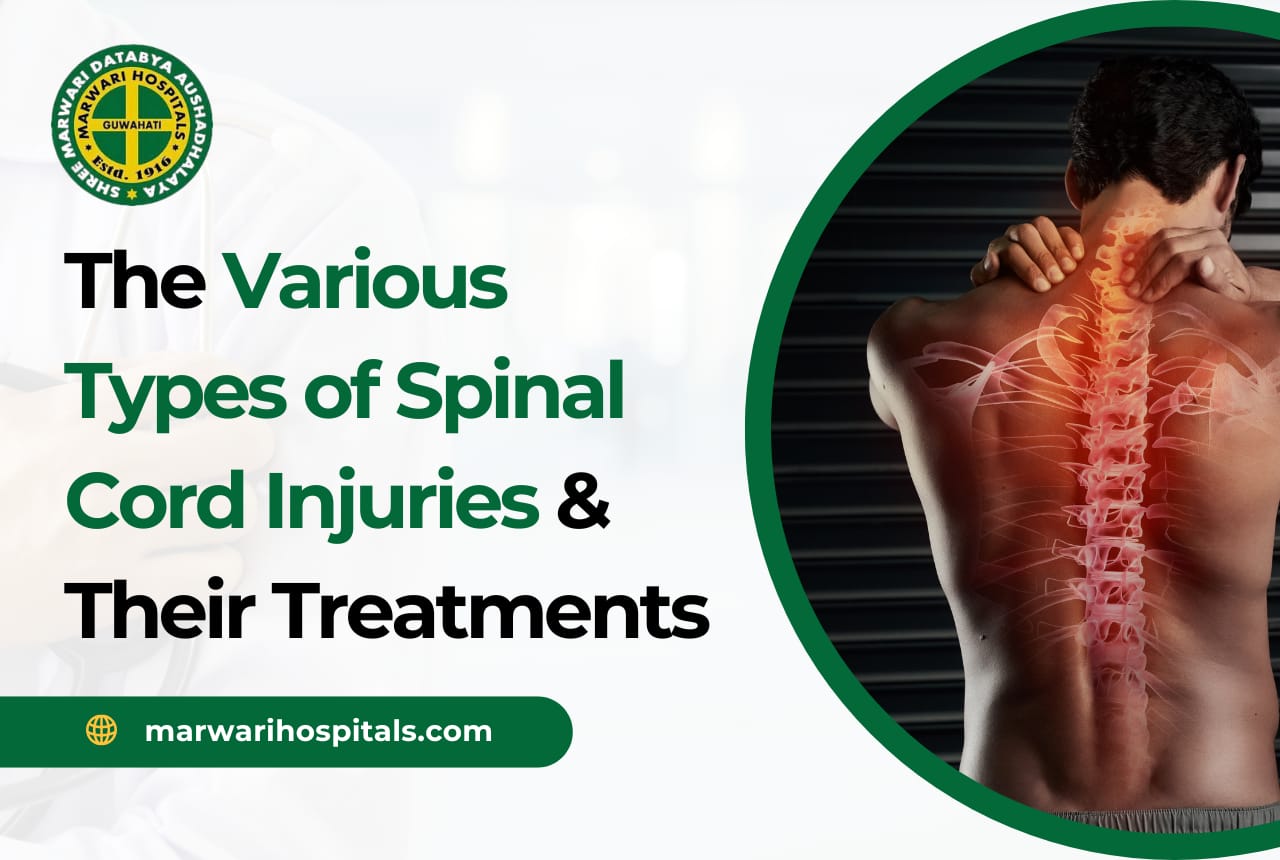Serious medical conditions, spinal cord injuries (SCIs) result from damage to the spinal cord, a bundle of nerves that transmits information from the brain to the remainder of the body. The disruption of these messages caused by the damage may result in sensory and motor impairments in the affected body areas.
Various factors, including automobile collisions, falls, and sports-related injuries, can result in SCIs. The location and extent of the injury can have a substantial impact on the severity of a SCI. Certain individuals who have suffered SCIs may be completely paralyzed, whereas others may retain some sensation and mobility.
This article will provide an overview of the symptoms, treatment options, and various types of spinal cord injuries. In addition, the difficulties of living with a spinal cord injury and the available resources to assist individuals in coping will be addressed.
Various Types of Spinal Cord Injuries

Cervical Spinal Cord Injuries (C1-C8 vertebrae)
Injuries to the spinal cord in the neck (C1-C8 vertebrae) are serious and can affect breathing, diaphragm function, and movement in all four limbs. The higher the injury in the cervical spine, the more widespread the impact can be.
Thoracic Spinal Cord Injuries (T1-T12 vertebrae)
Thoracic spinal cord injuries, affecting the vertebrae T1-T12 in the chest area, can impair the muscles used for breathing and core stability. Additionally, some bowel and bladder functions may be affected.
Also Read: Top 5 Causes of Nasal Congestion and Their Remedies
Lumbar Spinal Cord Injuries (L1-L5 vertebrae)
Injuries in the lower back (L1-L5 vertebrae) primarily impact the legs and can lead to loss of function in the bowels and bladder.
Sacral Spinal Cord Injuries (S1-S5 vertebrae)
Sacral spinal cord injuries, located at the bottom of the spinal cord (S1-S5), can affect bowel, bladder, and sexual function.
Complete vs. Incomplete Spinal Cord Injuries
Spinal cord injuries are categorized as complete or incomplete based on the sensory and motor function level remaining below the injury site.
- Complete Injury: A complete spinal cord injury means all signals below the injury site are lost. This results in a complete loss of muscle movement and sensation.
- Incomplete Injury: An incomplete injury indicates some nerve signals travel below the injury site. People with incomplete injuries may retain some sensation and movement, varying greatly depending on the severity and location of the damage. Recovery potential is often higher with incomplete injuries.
Also Read: Long-Term Side Effects of Inhalers in Children
Neurological Symptoms of Spinal Cord Injury

Spinal cord injuries disrupt communication between the brain and body, leading to various neurological symptoms. Here’s a breakdown of some key ones:
Paraplegia vs. Quadriplegia
- Paraplegia: Loss of movement and sensation in the lower body (legs).
- Quadriplegia: Loss of movement and sensation in all four limbs (arms and legs).
Muscle Weakness and Paralysis
The severity of muscle weakness can vary. Paralysis refers to complete loss of movement, while paresis indicates some muscle weakness remains.
Loss of Sensation
People with spinal cord injuries may experience numbness, tingling, or complete loss of feeling below the injury level, affecting touch, pain, and temperature perception.
Spasticity and Pain
Spasticity is a condition where muscles become stiff and tight, causing involuntary movements. Chronic pain, including neuropathic pain (burning, tingling), is common after a spinal cord injury.
Also Read: Wound Care Nursing at Home: 5 Easy Steps to Achieve
Diagnosis of Spinal Cord Injuries
A spinal cord injury is identified through a combination of evaluations. During an exhaustive physical examination, physicians assess the patient’s sensations, reflexes, and mobility. Imaging modalities, including X-rays, CT scans, and MRIs, offer a visual representation of the vertebrae and any associated injury. These examinations aid in determining the precise size and gravity of the damage.
Treatment Options for Spinal Cord Injuries

Spinal cord injuries require immediate medical attention and a comprehensive treatment plan to optimize recovery. Here’s an overview of some key treatment options:
Emergency Medical Care
Following a spinal cord injury, immediate medical care is crucial. Stabilizing the spine with a brace or traction helps prevent further damage and protects the spinal cord.
Medication
Medications play a vital role in managing various symptoms associated with spinal cord injuries. They can help control pain, reduce spasticity, and address other issues like bladder dysfunction.
Surgery
In certain instances, vertebral realignment, removal of bone fragments compressing the spinal cord, or spinal stabilization may require surgical intervention. The precise surgical methodology is contingent upon the characteristics and location of the injury.
Also Read: 8 Best Exercises for Neurological Disorders
Spinal Cord Rehabilitation
Spinal cord rehabilitation is an essential component of treatment, with the primary objectives of optimizing independence and restoring function. A group of specialists is engaged in the process, comprising physical therapists to enhance mobility and strength, occupational therapists to assist with activities of daily living, and speech therapists to address communication impairments. Ongoing rehabilitation can substantially enhance an individual’s quality of life.
Emerging Treatments
The field of spinal cord injury treatment research is perpetually advancing. Stem cell therapy, which seeks to stimulate nerve regeneration, and electrical stimulation techniques, which may assist in enhancing nerve function and regulating muscle movement, are both promising areas. Although these are currently under investigation, they provide optimism for forthcoming developments in the treatment of spinal cord injuries.
Also Read: What is the Role of Diagnostic Services in Disease Detection?
Living with a Spinal Cord Injury

Living with a spinal cord injury requires adjustments, but with support and determination, individuals can lead fulfilling lives. Here’s a look at some key aspects:
Physical Adjustments and Assistive Devices
The process of adjusting to one’s dwelling environment is vital. Ensuring accessibility can be achieved through the installation of hold bars in restrooms, ramps, and wider doorways. Prosthetics, wheelchairs, and walkers are examples of assistive devices that can substantially enhance mobility and autonomy.
Emotional and Psychological Well-being
Life-threatening spinal cord injuries necessitate the provision of vital emotional and psychological support. Spending time in nature or engaging in mindfulness practices are examples of beneficial coping mechanisms. Engaging in counseling or participating in support groups can offer individuals invaluable emotional solace during the process of adjusting to their new circumstances.
Social Integration and Advocacy
Social connection maintenance is vital to one’s well-being. A sense of belonging can be fostered through interests, family and friend maintenance, and participation in disability sports leagues. Promoting accessibility in the community and advocating for disability rights serve to empower individuals while also fostering a more inclusive atmosphere.
Conclusion
The location and severity of spinal cord injuries can differ, but they can impact functionality such as movement, sensation, and occasionally respiration. Stabilizing the vertebrae, symptom management with medication, and rehabilitation to maximize function and independence are the primary treatments.
Electrical stimulation and stem cell therapy research hold great potential for future developments. Navigating life with a spinal cord injury necessitates adaptations, but individuals can attain a sense of fulfillment through perseverance and assistance.
They can adjust to their surroundings, seek emotional support, and maintain social connections. Keep in mind that the path following a spinal cord injury is one of fortitude and optimism.

